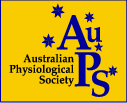

|
| Sunday 8th December 2013 | |||||||
| Gallery | Costa | Percy Baxter | Little Percy Baxter | ||||
| 14:00 |
The flipped classroom in physiology education
Chairs: Yvonne Hodgson & David Saint |
||||||
| 14:30 | |||||||
| 15:00 | |||||||
| 15:30 | |||||||
| 16:00 | |||||||
| 16:30 | |||||||
| 17:00 |
Registration
Location: Gallery |
||||||
| 17:30 |
AuPS Invited Lecture
Chair: David Allen
|
||||||
| 18:00 | |||||||
| 18:30 | |||||||
| Welcome Reception | |||||||
| 19:00 | |||||||
| 19:30 | |||||||
| 20:00 | |||||||
| 20:30 | |||||||
| 21:00 | |||||||
| 21:30 | |||||||
| Monday 9th December 2013 | |||||||||||||||||||||||||||||||||||||||||||||||||||||||||||||||||||||||||||||||||||||||||||
| Gallery | Costa | Percy Baxter | Little Percy Baxter | ||||||||||||||||||||||||||||||||||||||||||||||||||||||||||||||||||||||||||||||||||||||||
| 08:30 |
Roberts Lecture
|
||||||||||||||||||||||||||||||||||||||||||||||||||||||||||||||||||||||||||||||||||||||||||
| 09:00 |
Symposium: PPE - the use of Peers in Physiology Education Chairs: Deanne Skelly & Arianne Dantas
|
Symposium: Molecular physiology of inherited heart diseases Chair: Jamie Vandenberg
|
Free communications: Muscle metabolism and cell signalling
Chair: Victoria Foletta
|
||||||||||||||||||||||||||||||||||||||||||||||||||||||||||||||||||||||||||||||||||||||||
| 09:30 | |||||||||||||||||||||||||||||||||||||||||||||||||||||||||||||||||||||||||||||||||||||||||||
| 10:00 | |||||||||||||||||||||||||||||||||||||||||||||||||||||||||||||||||||||||||||||||||||||||||||
| 10:30 | |||||||||||||||||||||||||||||||||||||||||||||||||||||||||||||||||||||||||||||||||||||||||||
| 11:00 |
Morning Tea
Location: Gallery |
||||||||||||||||||||||||||||||||||||||||||||||||||||||||||||||||||||||||||||||||||||||||||
| 11:30 |
Symposium: Molecular control of skeletal muscle health in exercise and disease Chairs: Rod Snow & Aaron Russell
|
Symposium: Epithelial membrane transport Chairs: Stefan Bröer & Peter Thorn
|
Free communications: Applied exercise physiology
Chairs: Aaron Peterson & Glenn McConell
|
||||||||||||||||||||||||||||||||||||||||||||||||||||||||||||||||||||||||||||||||||||||||
| 12:00 | |||||||||||||||||||||||||||||||||||||||||||||||||||||||||||||||||||||||||||||||||||||||||||
| 12:30 | |||||||||||||||||||||||||||||||||||||||||||||||||||||||||||||||||||||||||||||||||||||||||||
| 13:00 | |||||||||||||||||||||||||||||||||||||||||||||||||||||||||||||||||||||||||||||||||||||||||||
| 13:30 |
Posters and Lunch
Location: Gallery Odd poster board authors in attendance.
|
||||||||||||||||||||||||||||||||||||||||||||||||||||||||||||||||||||||||||||||||||||||||||
| 14:00 | |||||||||||||||||||||||||||||||||||||||||||||||||||||||||||||||||||||||||||||||||||||||||||
| 14:30 | |||||||||||||||||||||||||||||||||||||||||||||||||||||||||||||||||||||||||||||||||||||||||||
| 15:00 | |||||||||||||||||||||||||||||||||||||||||||||||||||||||||||||||||||||||||||||||||||||||||||
| 15:30 |
Afternoon Tea
Location: Gallery |
||||||||||||||||||||||||||||||||||||||||||||||||||||||||||||||||||||||||||||||||||||||||||
| 16:00 |
Symposium: Intricacies of type 2 diabetes Chair: Robyn Murphy
|
Symposium: Aquaporin channels in the nervous system as therapeutic targets Chair: Andrea Yool
|
Free communications: Muscle/sarcoplasmic reticulum
Chair: David Allen
|
||||||||||||||||||||||||||||||||||||||||||||||||||||||||||||||||||||||||||||||||||||||||
| 16:30 | |||||||||||||||||||||||||||||||||||||||||||||||||||||||||||||||||||||||||||||||||||||||||||
| 17:00 | |||||||||||||||||||||||||||||||||||||||||||||||||||||||||||||||||||||||||||||||||||||||||||
| 17:30 | |||||||||||||||||||||||||||||||||||||||||||||||||||||||||||||||||||||||||||||||||||||||||||
| Tuesday 10th December 2013 | ||||||||||||||||||||||||||||||||||||||||||||||||||||
| Gallery | Costa | Percy Baxter | Little Percy Baxter | |||||||||||||||||||||||||||||||||||||||||||||||||
| 08:30 |
Symposium: Releasing pattern of pituitary hormones Chair: Chen Chen
|
Symposium: Sarcoplasmic reticulum proteins in myopathy Chair: Angela Dulhunty
|
Free communications: Exercise physiology and signalling
Chairs: Stuart Warmington & Catherine Winbanks
|
|||||||||||||||||||||||||||||||||||||||||||||||||
| 09:00 | ||||||||||||||||||||||||||||||||||||||||||||||||||||
| 09:30 | ||||||||||||||||||||||||||||||||||||||||||||||||||||
| 10:00 | ||||||||||||||||||||||||||||||||||||||||||||||||||||
| 10:30 |
Morning Tea
Location: Gallery |
|||||||||||||||||||||||||||||||||||||||||||||||||||
| 11:00 |
Symposium: High intensity intermittent exercise and training Chair: Nigel Stepto
|
Symposium: Gastrointestinal Function and Metabolism Chair: Mark Sleeman
|
Free communications: Cardiovascular
Chair: Graham Lamb
|
|||||||||||||||||||||||||||||||||||||||||||||||||
| 11:30 | ||||||||||||||||||||||||||||||||||||||||||||||||||||
| 12:00 | ||||||||||||||||||||||||||||||||||||||||||||||||||||
| 12:30 | ||||||||||||||||||||||||||||||||||||||||||||||||||||
| 13:00 |
Posters and Lunch
Location: Gallery See Monday for list. Even board authors in attendance. |
|||||||||||||||||||||||||||||||||||||||||||||||||||
| 13:30 | ||||||||||||||||||||||||||||||||||||||||||||||||||||
| 14:00 | ||||||||||||||||||||||||||||||||||||||||||||||||||||
| 14:30 | ||||||||||||||||||||||||||||||||||||||||||||||||||||
| 15:00 |
Afternoon Tea
Location: Gallery |
|||||||||||||||||||||||||||||||||||||||||||||||||||
| 15:30 |
Symposium: Dietary protein in health and disease Chair: Rene Koopman
|
Symposium: Physiological roles of noncoding RNA in muscle Chairs: Enzo Porrello & Paul Gregorevic
|
Free communications: Neuroscience
Chair: Tony Luff
|
|||||||||||||||||||||||||||||||||||||||||||||||||
| 16:00 | ||||||||||||||||||||||||||||||||||||||||||||||||||||
| 16:30 | ||||||||||||||||||||||||||||||||||||||||||||||||||||
| 17:00 | ||||||||||||||||||||||||||||||||||||||||||||||||||||
| 17:30 | ||||||||||||||||||||||||||||||||||||||||||||||||||||
| 18:00 | ||||||||||||||||||||||||||||||||||||||||||||||||||||
| 18:30 | ||||||||||||||||||||||||||||||||||||||||||||||||||||
| 19:00 |
Awards and AuPS Conference Dinner
Location: Hopetoun Room, The Pier, Geelong |
|||||||||||||||||||||||||||||||||||||||||||||||||||
| 19:30 | ||||||||||||||||||||||||||||||||||||||||||||||||||||
| 20:00 | ||||||||||||||||||||||||||||||||||||||||||||||||||||
| 20:30 | ||||||||||||||||||||||||||||||||||||||||||||||||||||
| 21:00 | ||||||||||||||||||||||||||||||||||||||||||||||||||||
| 21:30 | ||||||||||||||||||||||||||||||||||||||||||||||||||||
| 22:00 | ||||||||||||||||||||||||||||||||||||||||||||||||||||
| 22:30 | ||||||||||||||||||||||||||||||||||||||||||||||||||||
| Wednesday 11th December 2013 | |||||||||||||||||||||||||||||||||||||||||||||||||||||||
| Gallery | Costa | Percy Baxter | Little Percy Baxter | ||||||||||||||||||||||||||||||||||||||||||||||||||||
| 09:00 |
Plenary Lecture
|
||||||||||||||||||||||||||||||||||||||||||||||||||||||
| 09:30 | |||||||||||||||||||||||||||||||||||||||||||||||||||||||
| 10:00 | |||||||||||||||||||||||||||||||||||||||||||||||||||||||
|
Morning Tea
Location: Gallery |
|||||||||||||||||||||||||||||||||||||||||||||||||||||||
| 10:30 | |||||||||||||||||||||||||||||||||||||||||||||||||||||||
|
Symposium: Neuro control: Exercise and disease Chairs: Rod Snow & Dawson Kidgell
|
Free communications: Autonomic, GI and Kidney
Chair: Rick Lang
|
Free communications: Muscle and cell signalling
Chair: Kirsten Howlett
|
|||||||||||||||||||||||||||||||||||||||||||||||||||||
| 11:00 | |||||||||||||||||||||||||||||||||||||||||||||||||||||||
| 11:30 | |||||||||||||||||||||||||||||||||||||||||||||||||||||||
| 12:00 | |||||||||||||||||||||||||||||||||||||||||||||||||||||||
| 12:30 | |||||||||||||||||||||||||||||||||||||||||||||||||||||||
|
Lunch
Location: Gallery |
|||||||||||||||||||||||||||||||||||||||||||||||||||||||
| 13:00 | |||||||||||||||||||||||||||||||||||||||||||||||||||||||
| 13:30 |
AuPS AGM
Location: Percy Baxter |
||||||||||||||||||||||||||||||||||||||||||||||||||||||
| 14:00 | |||||||||||||||||||||||||||||||||||||||||||||||||||||||
| 14:30 |
Symposium: Of mice and men - translating biological signals into functional regulation Chair: Robert Lee-Young
|
Symposium: Cardiac injury and stress Chair: Lea Delbridge
|
|||||||||||||||||||||||||||||||||||||||||||||||||||||
| 15:00 | |||||||||||||||||||||||||||||||||||||||||||||||||||||||
| 15:30 | |||||||||||||||||||||||||||||||||||||||||||||||||||||||
| 16:00 | |||||||||||||||||||||||||||||||||||||||||||||||||||||||
| 16:30 |
Afternoon Tea
Location: Gallery |
||||||||||||||||||||||||||||||||||||||||||||||||||||||
| 17:00 | End of Meeting | ||||||||||||||||||||||||||||||||||||||||||||||||||||||
Administration access - requires authorisation
|
Copyright © 1996-2024 AuPS Inc. Last updated 10 December 2018.
Comments or questions on the content of this site should be directed to the Secretary, AuPS. Technical problems should be referred to the Webmaster Privacy Policy |

|